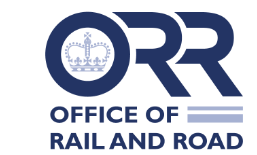The Office of Rail and Road has extensive responsibilities for regulating the largely private sector rail industry but quite limited oversight of public sectors roads. The Department for Transport is planning its third Road Investment Strategy investment programme (RIS3). The ORR has been consulting on its role in relation to RIS3. Essentially, the ORR sees its role as ensuring that National Highways (formerly Highways England) achieve value for money in implementing the DfT’s investment priorities.
The ORR consultation document states that it is not the role of the ORR to set roads policy or determine investment priorities. However, it is a shortcoming of the ORR’s approach that it does not consider to what extent the investments agreed by government achieve the benefits to road users that are expected. This is a major gap in public oversight.
The National Audit Office from time to time evaluates benefits to users of road investment, for instance its 2019 report on improvements to the A303. But NAO oversight is occasional, not systematic.
Detailed analysis of the outcomes of road investment may show major discrepancy between forecast and outturn, for instance for widening the M25 between junctions 23 and 27. One general explanation is the underestimation of the scale of induced traffic . Induced traffic reduces travel time savings, supposed main economic benefits of investment, which is why transport models tend to underestimate its magnitude.
One source of induced traffic is the rerouting of local trips, such as commuting, to take advantage of faster travel on widened motorways, pre-empting capacity intended for business users and so undermining the economic case for widening. This is likely to be a general phenomenon in or near areas of high population density, where the strategic road network comes under greatest stress, and where the case for additional capacity seems strongest.
More generally, average travel time, as determined in the National Travel Survey, has remained essentially unchanged for half a century, during which time huge sums have been invested in road infrastructure justified by the saving of travel time. Travel time savings are short-run. In the longer run, over the greater part of the life of the assets, the main benefit of investment that allows faster travel takes the form of increased access to people and places, opportunities and choices.
All in all, there is reason to suppose that the outcomes of road investments may be substantially different from that forecast by the traffic and economic models in use, and that road users are not benefiting from investment in new capacity to the extent intended. The ORR should take on the task of ensuring that road investment appraisal methodologies are fit for purpose.


[…] Audit Office carries out good analysis of road investments on occasion, but not systematically. The Office for Rail and Road scrutinises the management of the SRN, including how well new investments are delivered, but does […]
[…] post a blog a few months ago about the Office of Rail and Road (ORR), which was consulting on its involvement in the third road investment strategy (RIS3). The outcome of this consultation […]